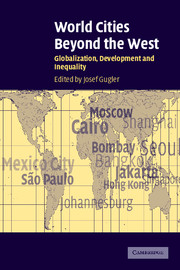Book contents
Afterword
Published online by Cambridge University Press: 12 October 2009
Summary
Cities around the world are the terrain where multiple global processes assume concrete and localized forms. These localized forms are, in good part, what globalization is about. Incorporating cities in analyses of globalization means recovering this multiplicity of presences and dynamics in the urban landscape. But herein also lies one of the theoretical and methodological challenges for the new field of research on cities and globalization. It is intrinsic to major cities to have enormous visual, organizational, and historic specificity. The global will inevitably be a partial condition in such cities, unlike for instance, what it might be in an export-processing zone, and it will be inflected by the specificities of each city. Methodologically we confront the problem of detecting the global under conditions of enormous variability across cities and specificity inside cities. Theoretically, we confront the challenge of interpreting an attribute that is systemic at a global scale yet assumes specific forms and meanings in each city.
This volume adds to this large and challenging enterprise by introducing a perspective on major cities in the global south, and their specificities. This is an enormously important step in a field dominated by studies of cities in the global north. Through its distinctive focus this volume contributes to de-center the production of knowledge about globalization and cities. It shows us the enormous variability among these cities, but also that there are certain shared patterns beneath these sharp differences.
- Type
- Chapter
- Information
- World Cities beyond the WestGlobalization, Development and Inequality, pp. 371 - 386Publisher: Cambridge University PressPrint publication year: 2004
References
- 4
- Cited by

